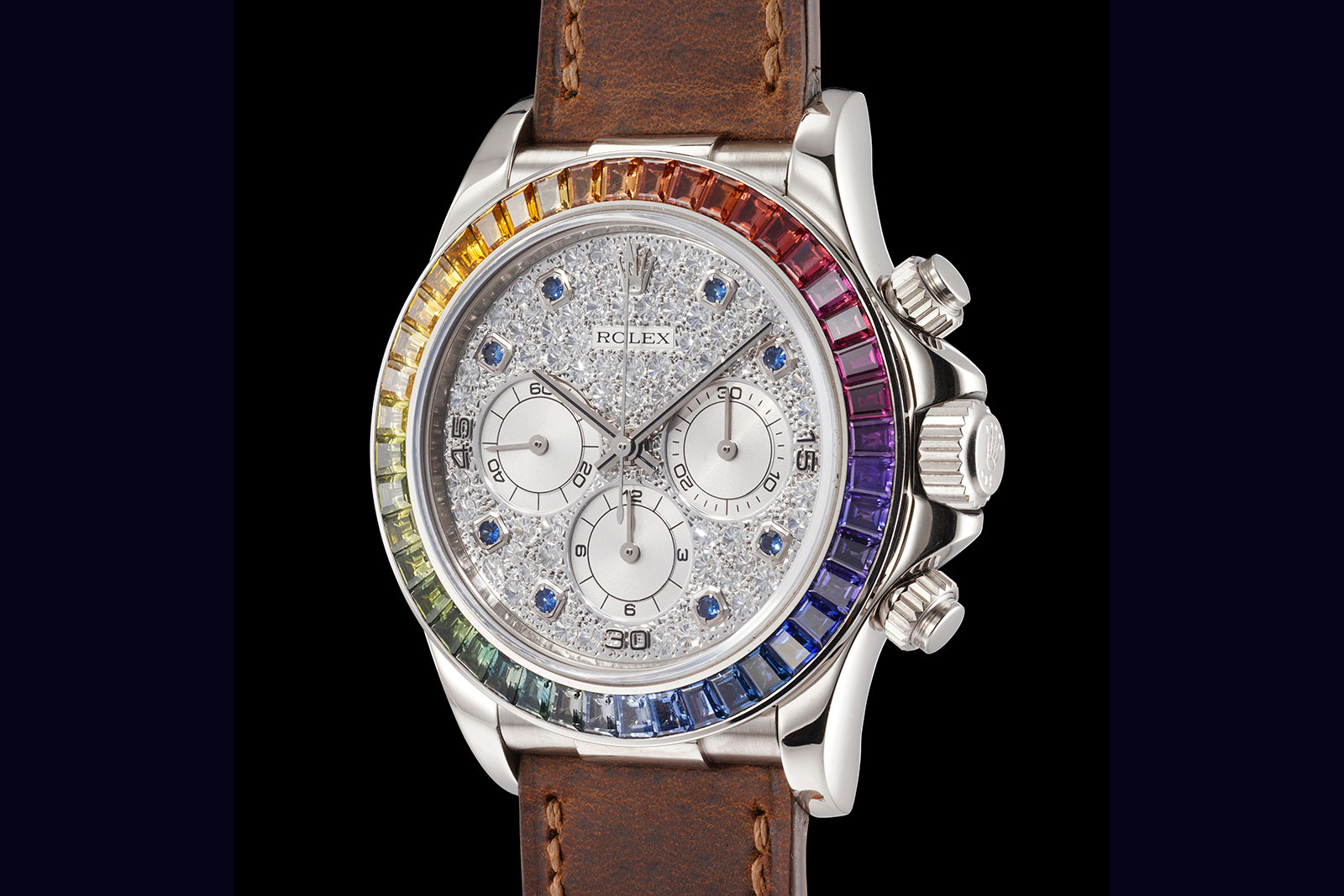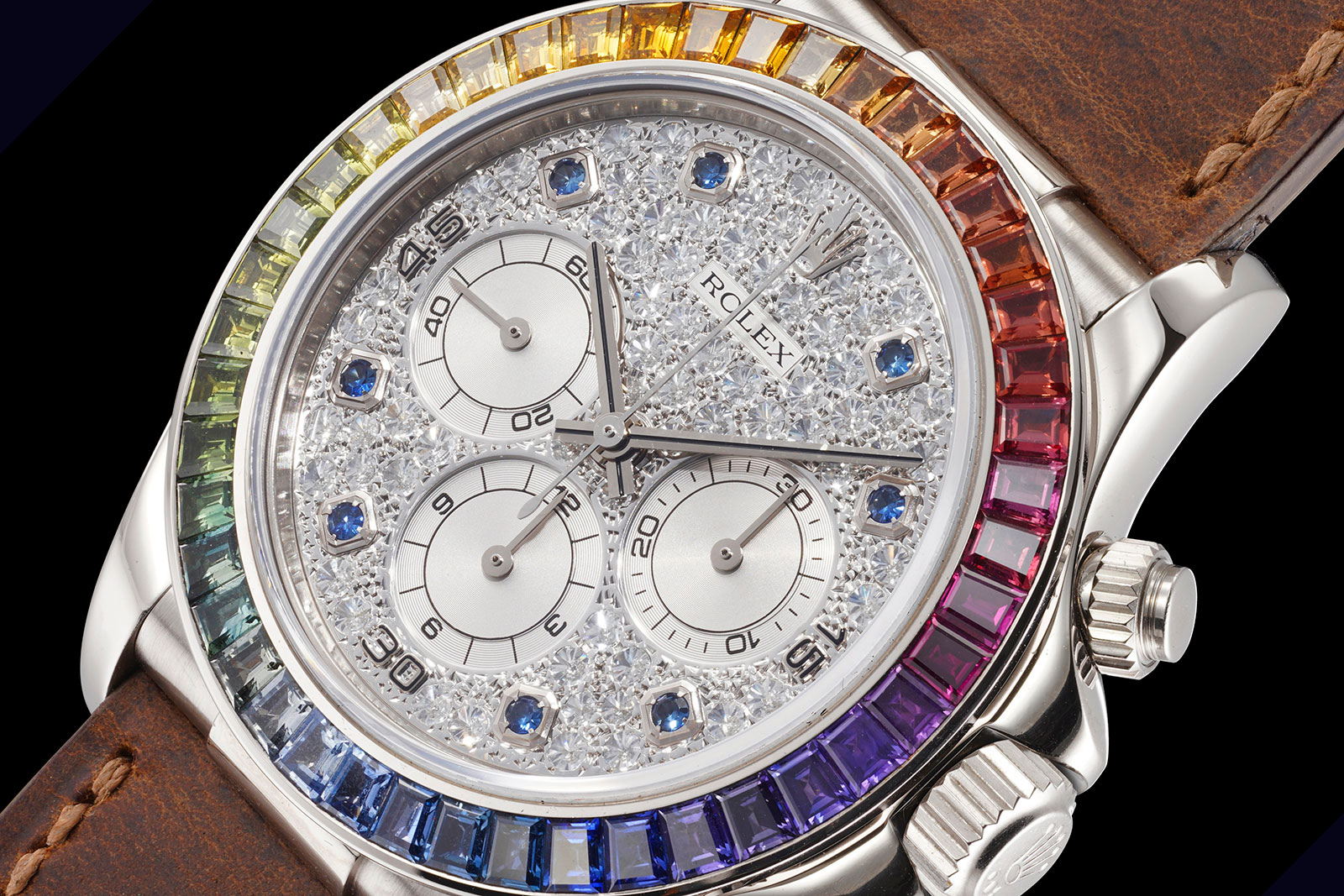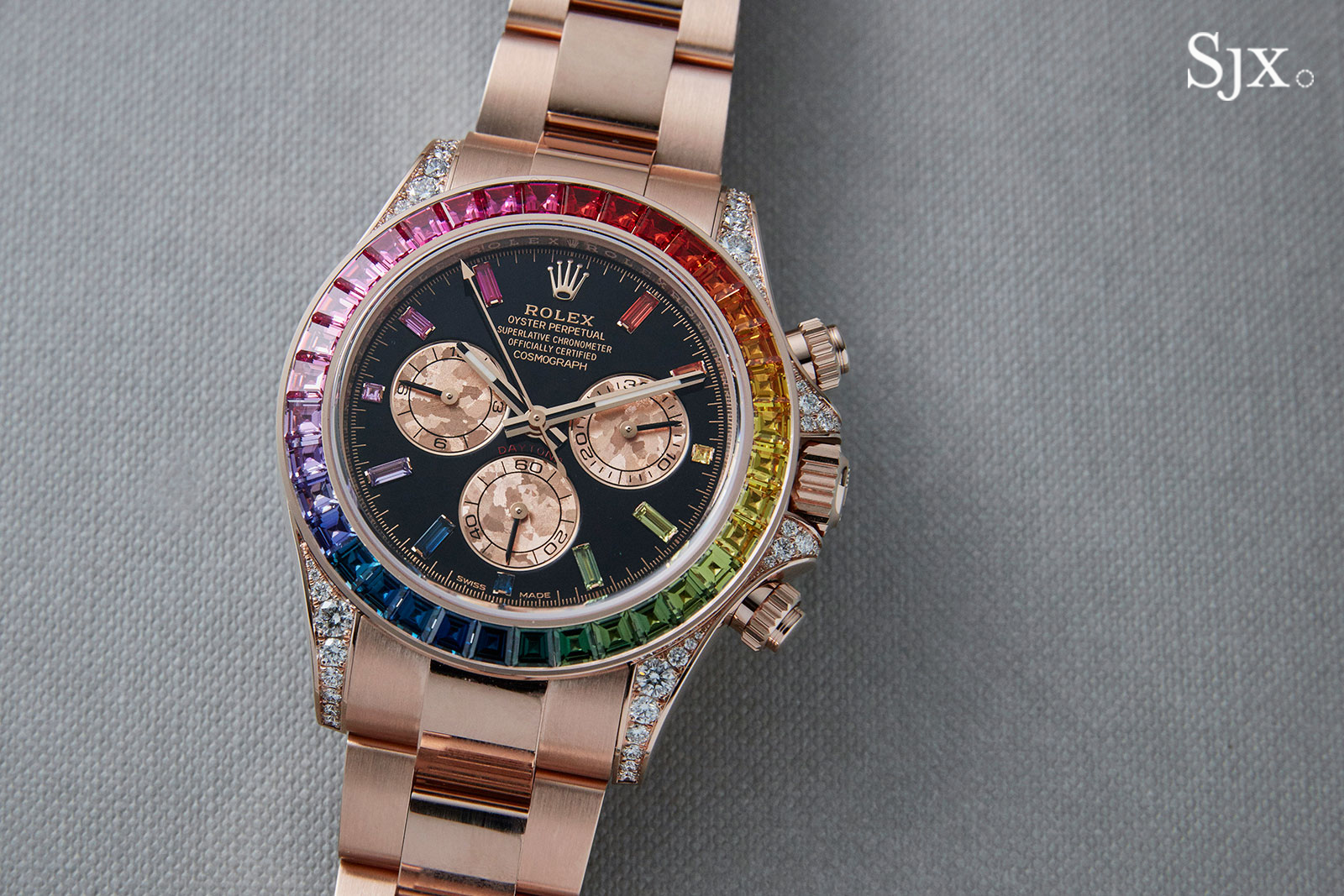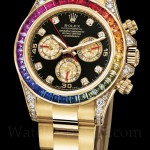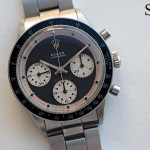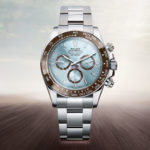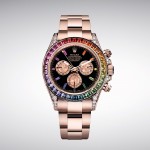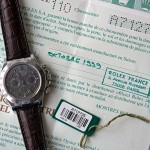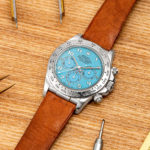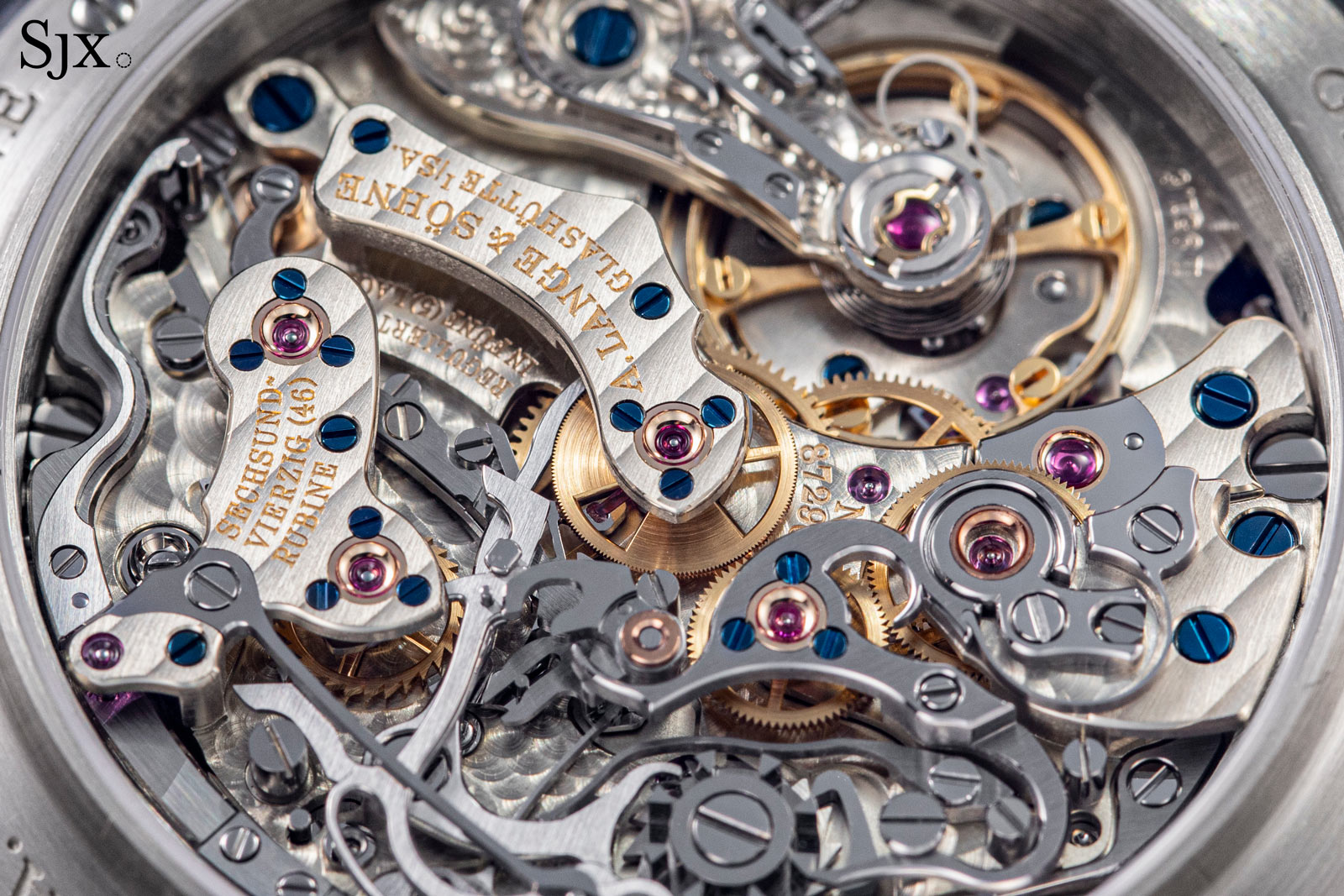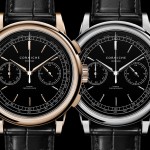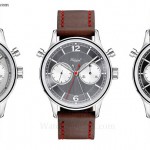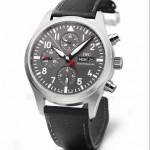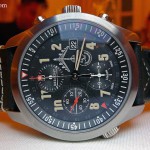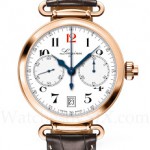The chronograph is an on-demand complication, as its operation requires the user to active the function. As such, the chronograph, or more accurately a stopwatch, engages selectively with the going train of the watch. The chronograph wheel couples with the going train when engaged and uncouples when stopped or reset. The mechanism which makes this selective engagement possible is the clutch.
Arguably the most classical form of clutch is the horizontal clutch, also known as a lateral coupling. As suggested by the name, the coupling action takes place horizontally, with the clutch arm moving on a plane parallel to the movement. Because the mechanism is spread out laterally, it results in an intricate display of mechanics, which is one reason why the lateral coupling is desired by many enthusiasts.
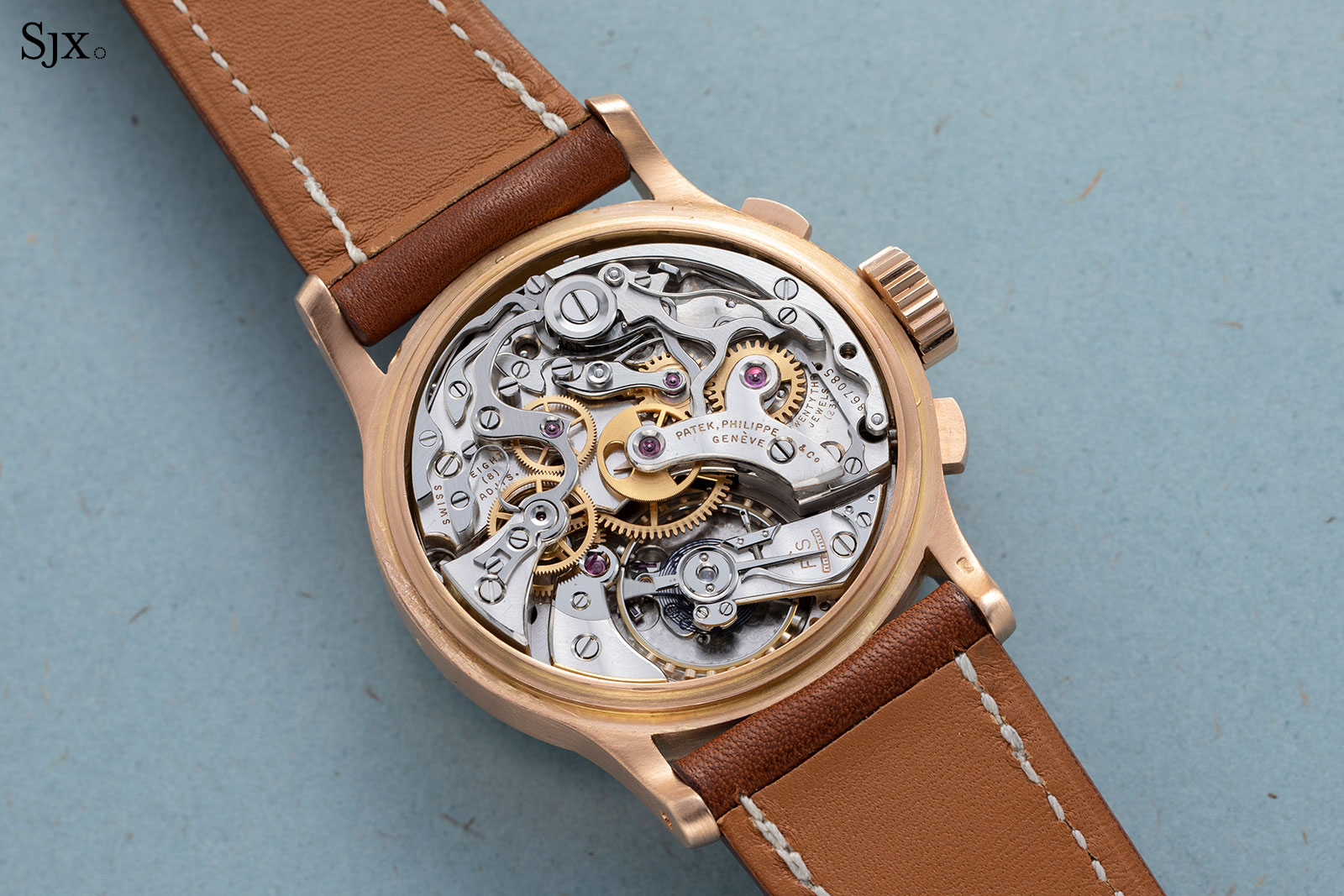
A eminently classical chronograph construction in a mid-20th century Patek Philippe ref. 530
How it works
The fundamentals of the horizontal clutch are outlined in Figs. 1 and 2.
Gear R1 is fixed to the seconds’ mobile, on the same axis, above the going train. The same mobile conveys the turning motion from the going train, and may carry the small seconds hand on the dial side. The clutch arm pivots on the same axis as R1 and carries an intermediary clutch wheel R2.
In Fig. 1 the column wheel or cam (not shown) keeps the clutch uncoupled with the intermediary wheel R2 idling. In other words R2 is turning but not driving anything.
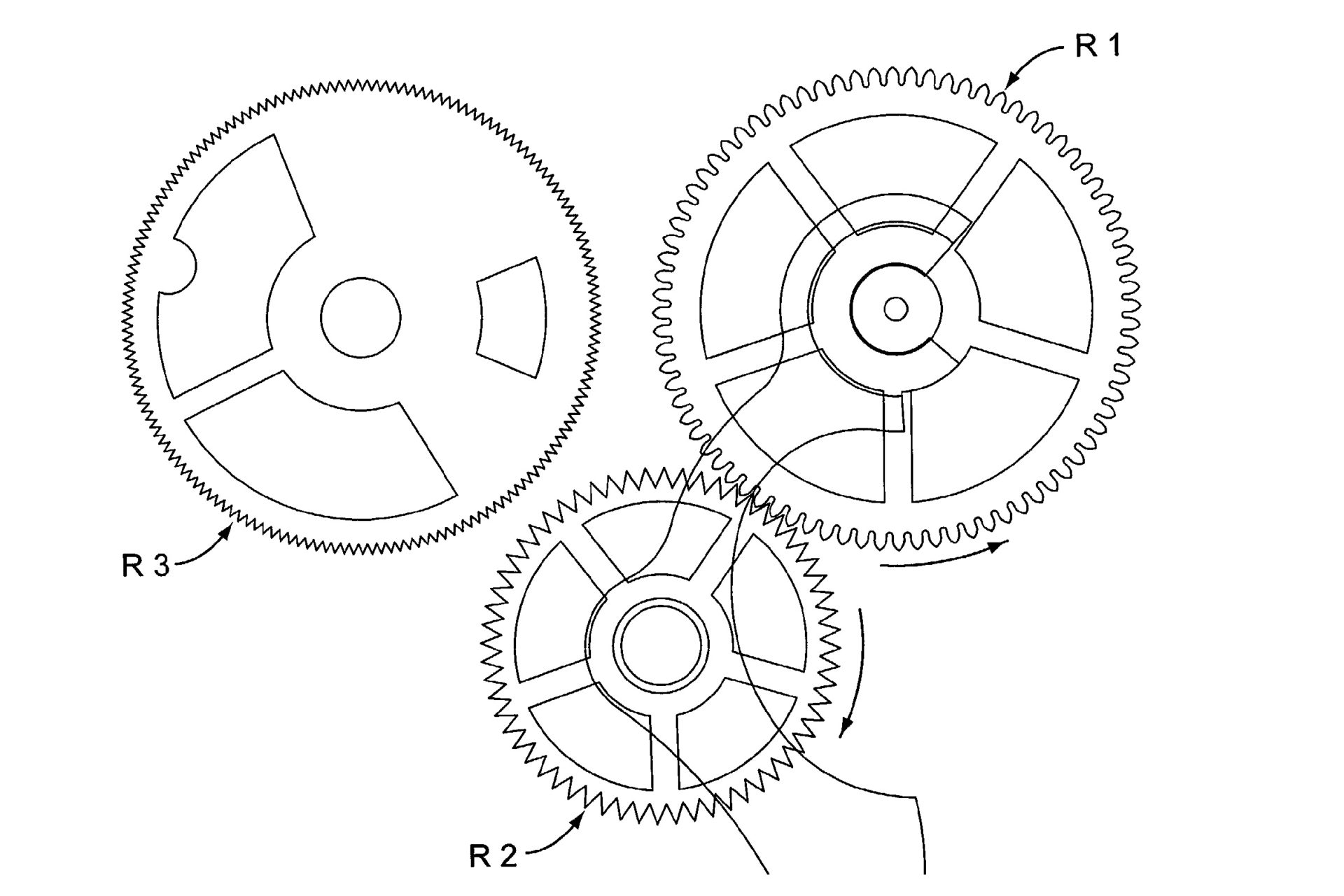
Fig 1. Image – Patek Philippe patent EP1437633B1
In Fig. 2 the chronograph is started and the clutch arm swings towards the chronograph seconds wheel R3.
This brings R2 into engagement with R3, thus linking the chronograph seconds to the going train. Minutes and even subsequent hour counters can be also run from the R3 mobile.
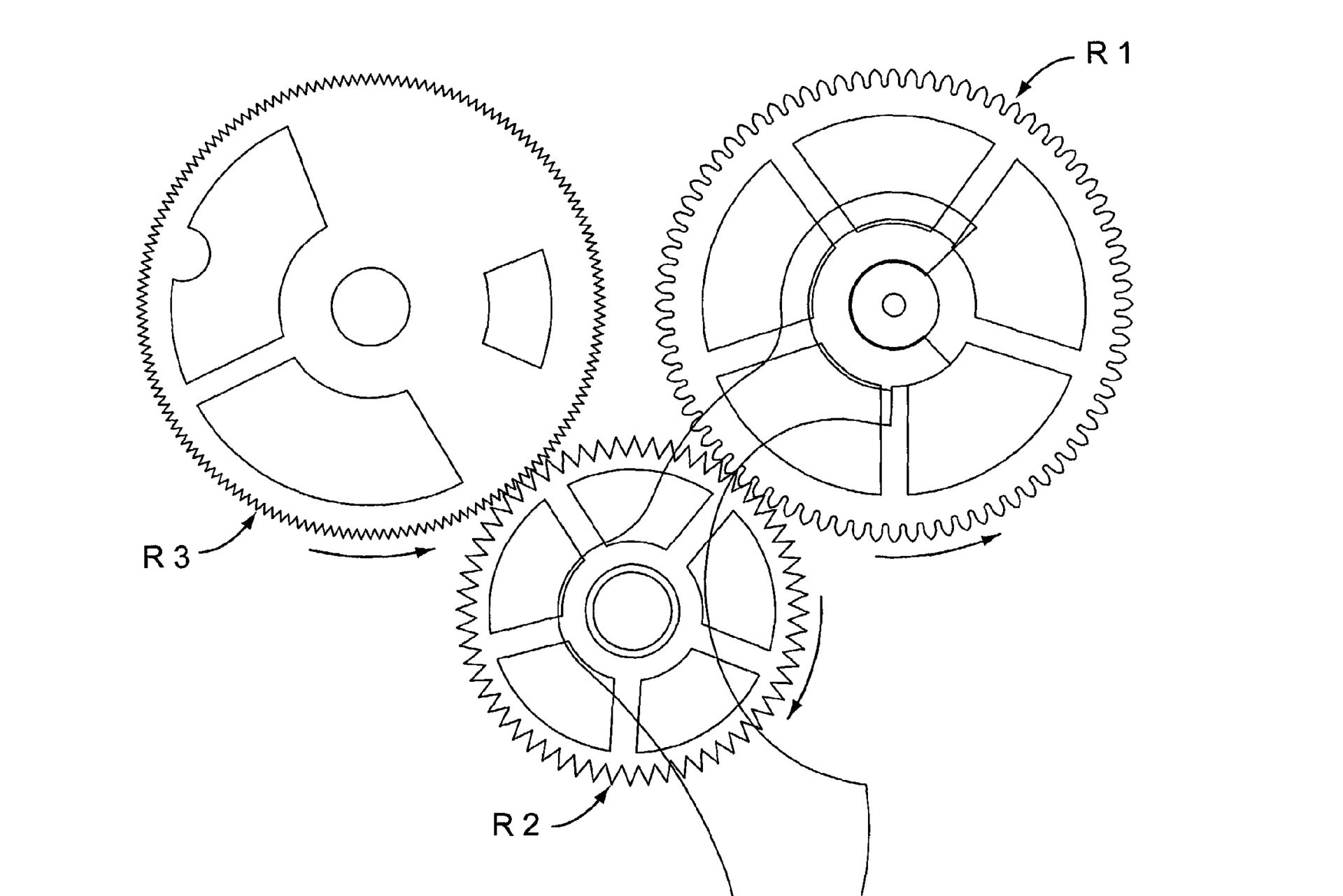
Fig 2. Image – Patek Philippe patent EP1437633B1
Efficiency
Besides looking good through a display back, the horizontal clutch is a straightforward and intuitive system. However, it is arguably inefficient. The intermediate wheel is essentially dead weight (or rather dead inertia) while the movement is running with the chronograph disengaged. Moreover, the power transfer from the going train’s seconds mobile to the chronograph, via the lateral pivot of the arm, is far from ideal.
In conventional gear trains, teeth profiles usually have a sloped, ogive shape — a simplification of the theoretical true epicycloidal profile. This specific tooth profile has become the norm because it handles energy transfer optimally, as the gears roll together in the going train. With these type of gears, at least 95% of the energy is transferred from the driving wheel to the driven wheel, making the system efficient.
If we refer back to the Figs. 1 and 2, we’ll notice the sharply pointed teeth of gears R2 and R3. Moreover, the teeth on R3 are much finer than those on R2, in order to assure the least jump – requiring a seamless meshing of teeth – when the chronograph is started. The intermediate wheel R2’s teeth need to mesh well with seconds wheel R1’s teeth but simultaneously to engage swiftly with the smaller teeth on R3.

Fig 1.
The depth of engagement between R2 and R3 can usually be regulated via eccentric screws that adjust the lateral position of the clutch arm. The teeth’s penetration cannot be too deep as that would generate unwanted friction and grinding during meshing. Equally, the engagement can’t be too shallow as that would make the seconds hand stutter visibly when the chronograph is started, while also being more susceptible to uncoupling when subjected to shocks.
The nature of the lateral coupling means that the usual engineering rules that govern gear engagement are broken, resulting in substantial play between the gears, leading to even more energy losses during start, stop, and reset.

A truly classical clutch typical of the late 19th and early 20th century in the Patek Philippe ref. 767 pocket watch that uses a modified horizontal clutch for its double split function
Crisp motion
When the chronograph is uncoupled and intermediate wheel R2 idles there’s a considerable flutter within R2 itself as there’s no tension to keep it tight. This in turn can exaggerate the starting jump of the chronograph seconds when the start pusher is depressed.
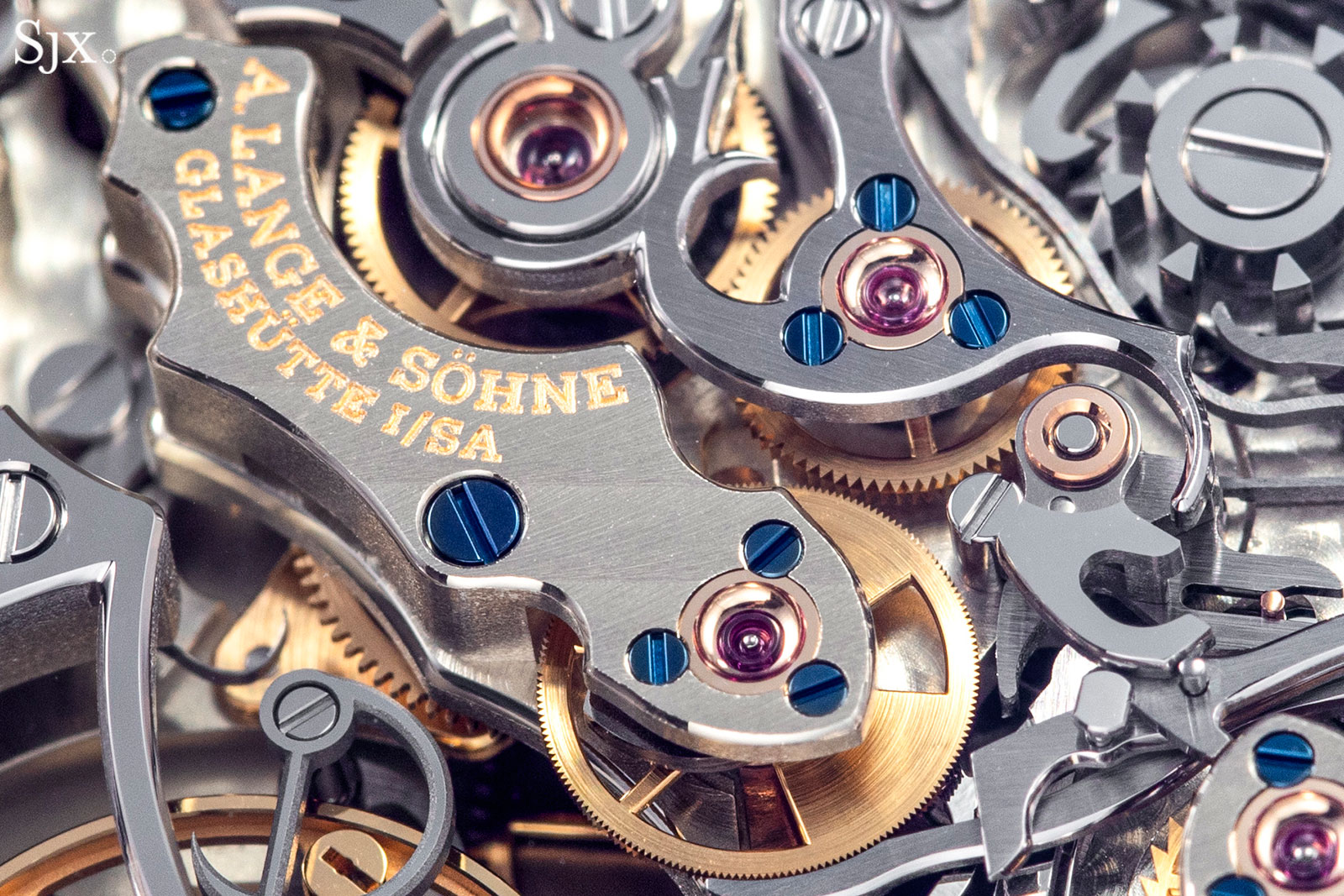
The horizontal clutch in the landmark Lange Datograph movement; note the difference between the coarse teeth of the intermediate wheel and the fine teeth of the seconds wheel
The clutch arm acts like a non-tensioned appendix to the timekeeping going train. When the chronograph is engaged, the lack of tension in R3 could lead to a very perceptible “stutter” of the chronograph seconds hand on the dial side, were it not for a chronograph-wheel tensioner spring.
The tensioner induces some mechanical resistance to the chronograph seconds wheel, so it cannot flutter like the intermediary clutch wheel R2. The tensioner also eliminates some of the play between the gears when the chronograph is engaged.
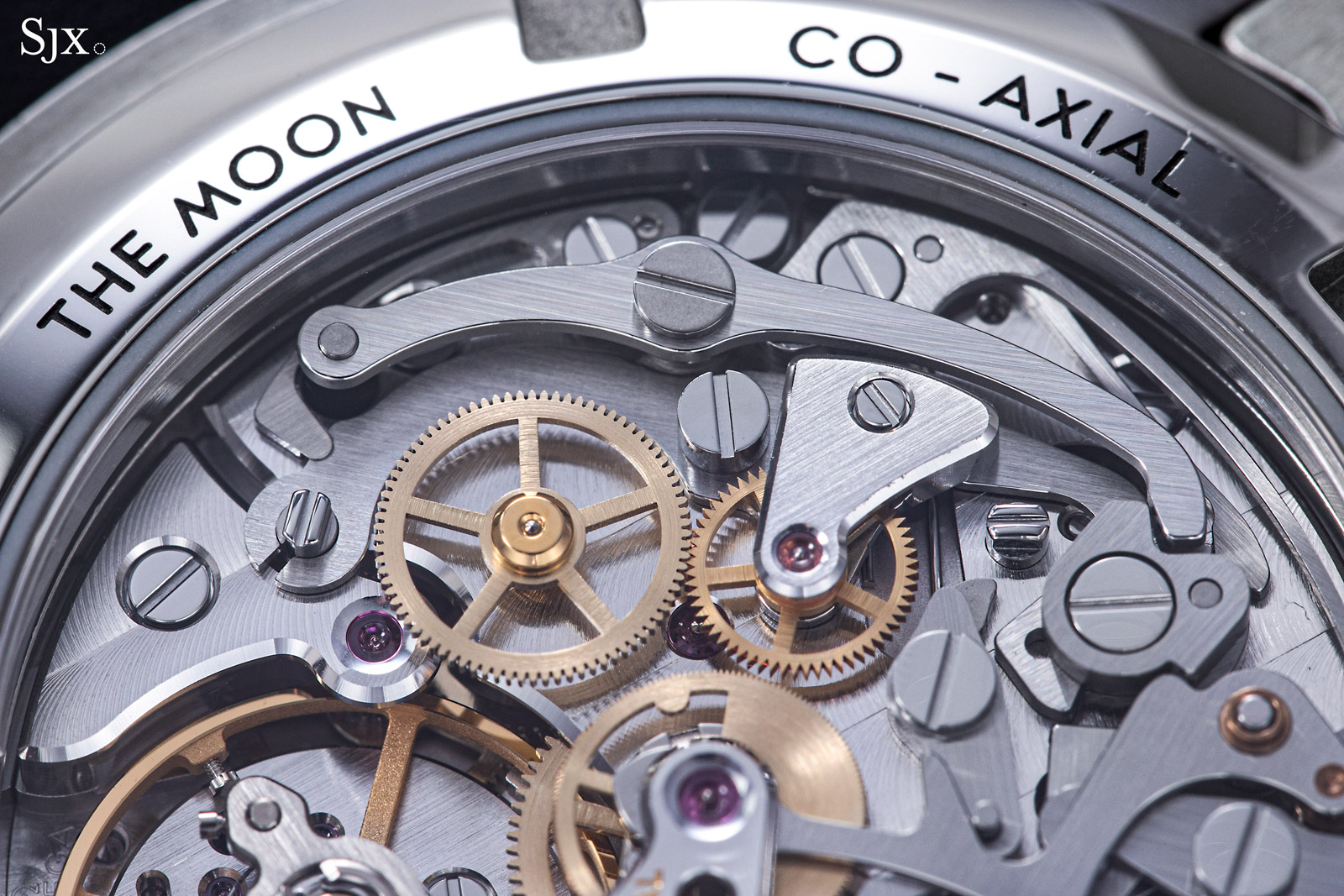
The Omega cal. 3861 with a traditional horizontal clutch
The second problem of the horizontal clutch relates to the “stutter”, or momentary jump induced by the clutch, of the chronograph seconds hand when it is first started. Sometimes the hand may jerk forwards or backwards instantaneously just before it starts its elapsed-time motion.
The jump is caused by the swift and sudden meshing of the two gears as a result of the pivoting lateral clutch arm. Ideally, the sharp teeth of the wheels should mate seamlessly. In practice, it sometimes happens that the teeth come into engagement tip-to-tip (as seen in Figure 3), which causes the chronograph seconds mobile to jump as the teeth slide into meshing position, fractionally moving either backwards or forwards.
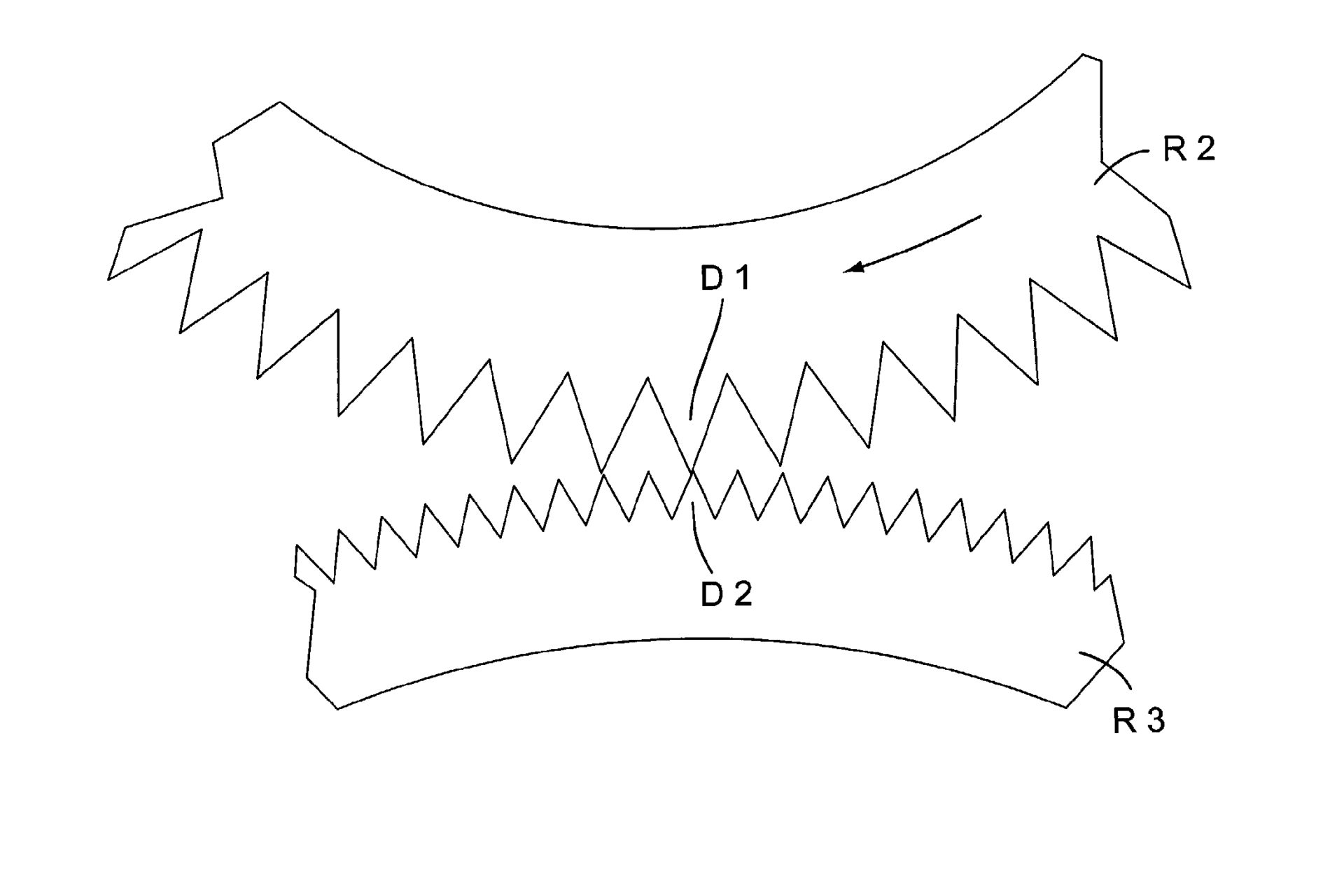
Figure 3. Image – Patek Philippe patent EP1437633B1
Such forceful engagement can take its toll on the teeth over time, as there’s a lot of friction and pressure involved in the tip-to-tip collision. However, it’s not the start that exerts the most stress, but rather prolonged running of the chronograph. Because the gear engagement is far from ideal, the teeth might grind together in some instances, leading to uneven wear over time. This in turn results in even jerkier starts and an accentuated stutter of the chronograph seconds.
The issue of teeth meshing in horizontal clutches has been addressed by some brands. Patek Philippe is notable for having developed a special hooked tooth profile for its CH 29-535 PS family of calibres in order to minimise the starting “stutter” as much as possible.
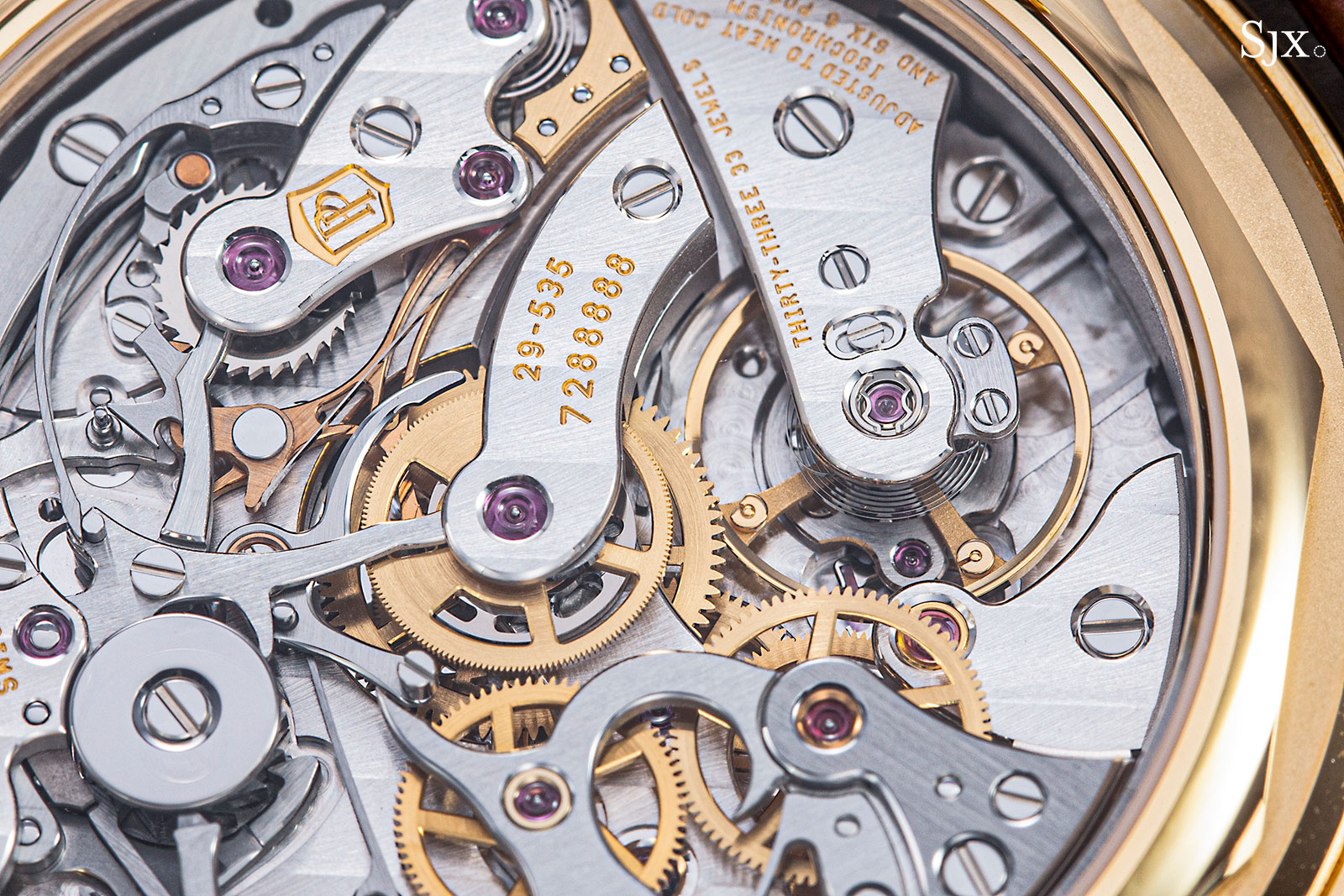
The CH 29‑535 PS Q in the Patek Philippe ref. 5270 with its patented hooked teeth
The hooked teeth also ensured that any residual “stutter” would only project the seconds hand forwards, as to not detract from the elapsed time measurement in a meaningful way. Omega claims to have achieve something similar with the teeth profiles in the cal. 3861 found in the latest-generation Speedmaster Moonwatch.
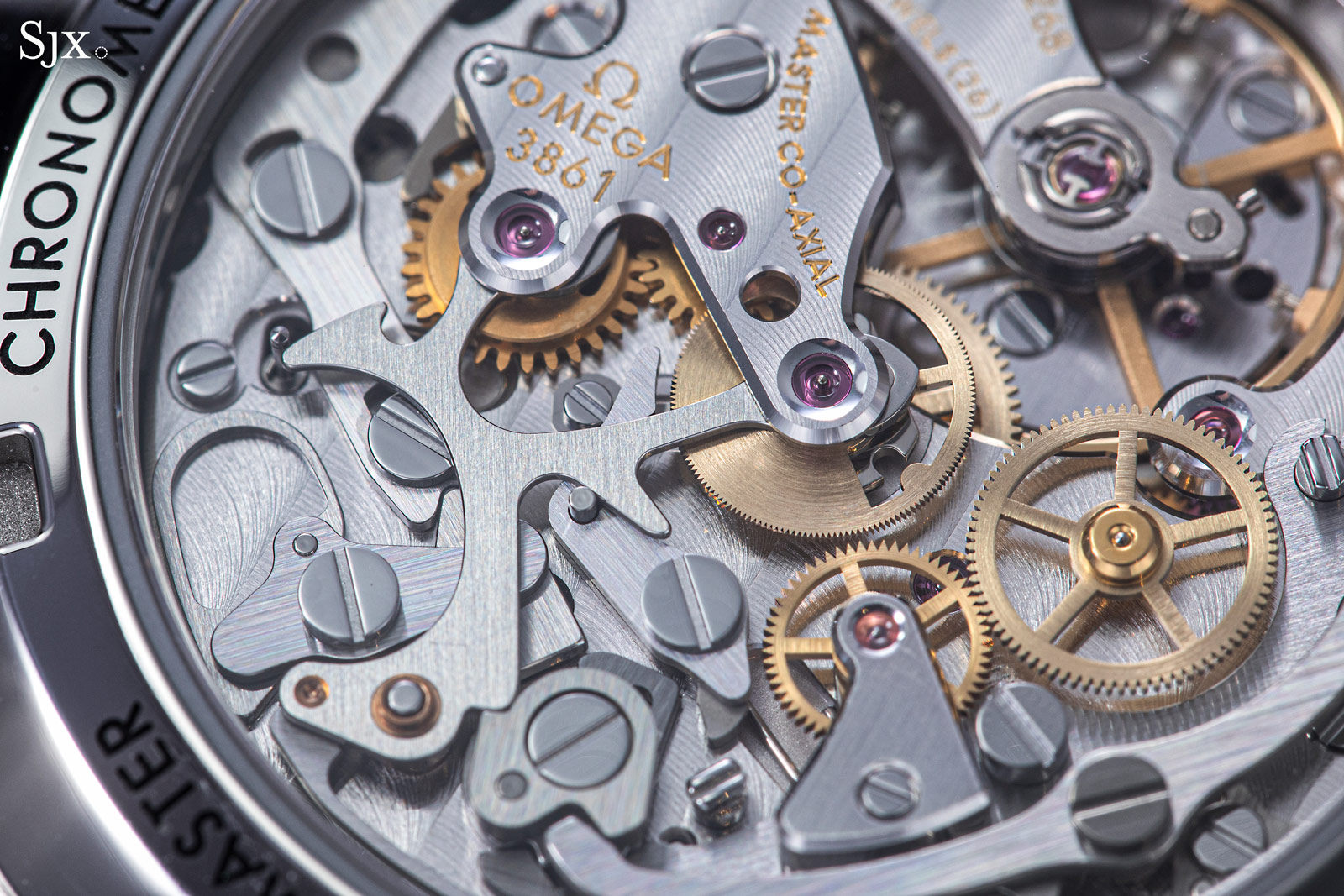
Forward-thinking movement maker Agenhor almost did away with teeth altogether in its AgenGraphe of 2017. Its horizontal clutch relies on wheels with smooth rims coated with an abrasive film, allowing the wheels to engage by friction alone. The system was dubbed the AgenClutch.
Each of the abrasive wheels is superimposed on a secondary security wheel that has loosely spaced, shallow teeth, to ensure the chronograph seconds hand is properly indexed even when subjected to momentary shocks.
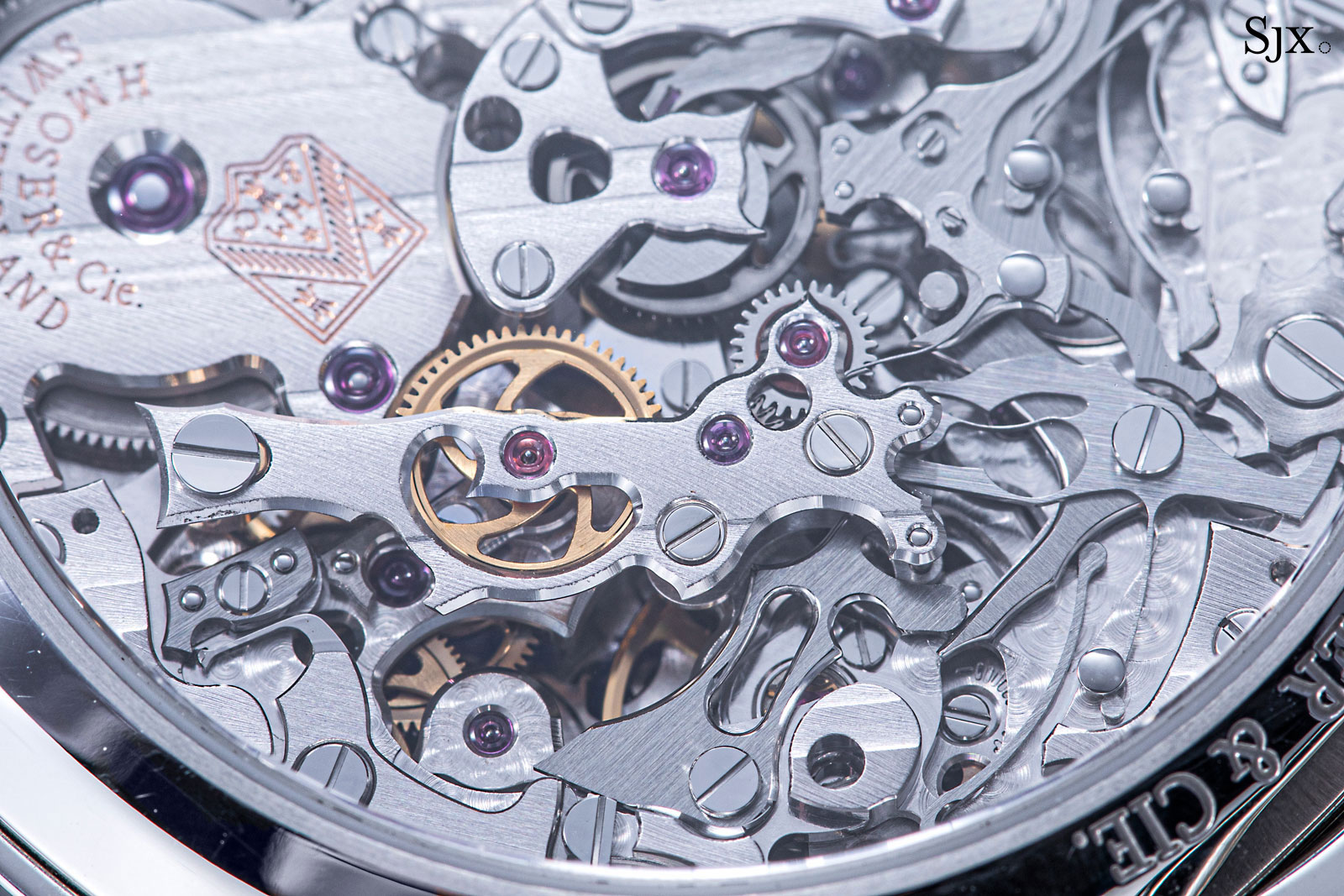
The AgenGraphe with the unique AgenClutch inside the H. Moser & Cie. Moser Streamliner Chronograph
Conventional wisdom suggests that horizontal-clutch chronographs should not be run for extended periods. For one, this leads to a gradual but modest decline in amplitude of the balance wheel over time. But it can also lead to the teeth of the chronograph wheels grinding.
However, new materials, improved teeth geometry, along with proper adjustment during movement assembly, have gone a long way to mitigate the problem, which is no longer a significant issue with modern timepieces.
Back to top.